Autumn can be a tense time for skiers as we watch for signs of what the weather will be like for the coming ski season, praying of course for low temperatures and abundant powder!
The technology to predict the weather gets ever more sophisticated as does meteorologists knowledge of climate patterns. The changing sea temperatures in the Pacific for example, known as the Southern Ocean Oscillation, can have a big impact on snow conditions in different parts of North America (and some believe in the Alps too). These are the famous El Niño (warmer) and La Niña (colder) phases. A strong La Niña winter, which can be predicted months in advance, usually means huge snowfalls.
But the truth is we still don’t really know, until a week or two out, just which way the weather is going to turn. Our best hope comes in what’s most likely to happen, even if nothing is ever guaranteed, based on how much snowfall a ski resort receives on average.
Most resorts have been collecting that data for decades and companies like Snow Forecast (snow-forecast.com) have so much data they can instantly tell you on their app what the average snowfall total is (along with likelihood of blue sky, still days), at any ski area for any week of the season.
Here though, is a guide to some of the snowiest resorts, on average, by country (rounded to the nearest 10cm).
North America
USA
We start with the US because it was here, in the 1998-99 season that the little-known ski area of Mt Baker, up in Washington state in what’s called the Pacific Northwest corner of the country, set a world record snowfall total that’s not been matched since – receiving a staggering 95 feet (that’s 29m) of snowfall through the winter. The problem with those sorts of volumes is you can end up with too much snow (yes, hard to believe it but that is a thing, occasionally). Too much snow quickly buries lifts, closes access roads and sets the avalanche danger to max, almost as big a problem as too little.
Jackson Hole
In terms of the main destination resorts though, it’s probably no surprise that Jackson Hole, famed for its exciting terrain and deep powder, tops the table with a 10.7m average.
Stay At:
Hotel Amangani is a luxurious hotel perfect for skiing, adventure, and relaxation.
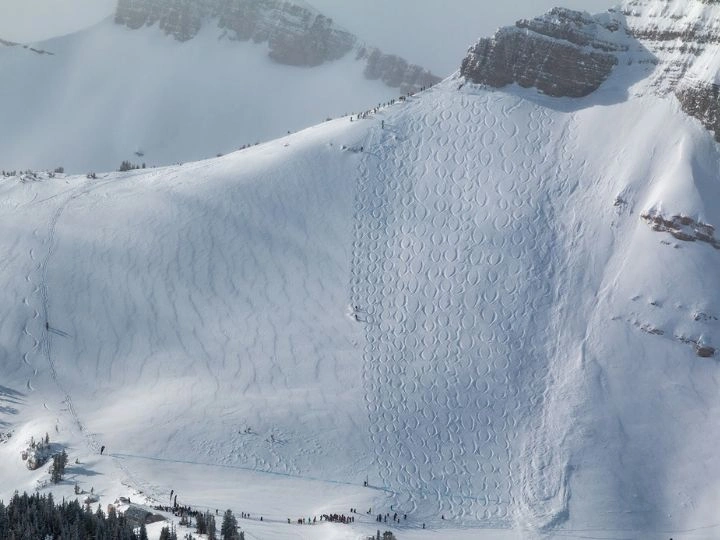
Palisades Tahoe
For the West Coast, Palisades Tahoe, which has a high base elevation, is top with a 10.2m average, not far behind Jackson Hole. No surprise it markets itself as North America’s spring skiing capital, often staying open into June, sometimes to US Independence Day on July 4th, it gets so much snow.
Stay At:
The Village at Palisades Tahoe offers fabulous the ski-in-ski-out accommodation, blending classic charm with luxurious facilities.
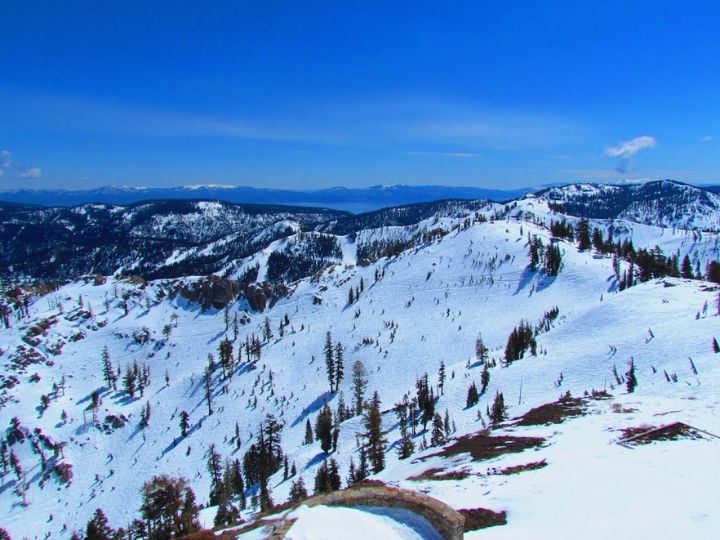
Breckenridge
In Colorado, Breckenridge holds the top spot for the larger resorts. Receiving an annual average 7.7m combined with having some of America’s highest terrain, some of it served by the world-highest chairlift, makes it one of the planet’s more snowsure bets.
Stay At:
One of the best ski resorts in North America, which access to excellent amenities and facilities.

Canada
Whistler
It’s no secret that a big part of Canada’s rapid rise to popularity over the past few decades for skiers, is its famed abundant light powder, usually scoring some of the biggest annual snowfall totals on the planet. That’s boosted by its northerly latitude and their proximity of Pacific weather systems. Indeed, North America’s biggest resort, Whistler Blackcomb, right in the Pacific coastal mountains north of Vancouver posts the biggest stat of the larger Canadian resorts, a seasonal average of 11.6m.
Stay At:
Beautiful luxury hotel that is classed as the highest hotel on Blackcomb Mountain.

Revelstoke
Going inland, the only ski area with (slightly) bigger lift served vertical in North America than Whistler, fellow BC area Revelstoke, is just behind on average snowfall totals – Revelstoke, is on 10.5m. But big snowfall totals are the norm with Banff’s Sunshine ski area, which has a nearly 7-month ski season to late May, reporting and average of 9m of natural snowfall, the same as nearby Fernie.
Stay At:
The most indulgent of chalets offers unparalleled access to exceptional amenities and the beautiful British Columbia.
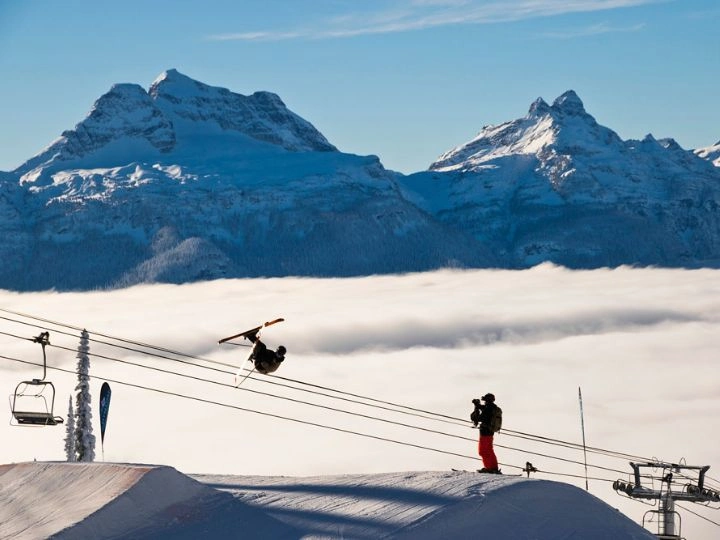
Europe
Snowfall totals in Europe aren’t quite what they are in North America, but some centres post big numbers nonetheless and have particularly strong reputations for being the most snowsure closer to home.
Austria
In Austria, the Arlberg region tops the table for the country’s bigger destinations, with the smaller villages of Warth-Schröcken there in the top spot claiming a remarkable 11m average. That’s the most of any resort in Europe in fact, and ahead of its better-known neighbours St Anton (7m) and Lech-Zürs (6.5m). The altitude resort of Obertauern, where the Beatles famously filmed the snowy scenes for their Help! movie more than 60 years ago, is also top five with a 3 metre average. Sölden (4m) is also up there, its famously snowsure, hosting the opening event of the annual FIS World Cup Alpine Ski racing tour in late October each year.
Stay At:
Based in the centre of the resort, the hotel has fabulous access to the lifts.
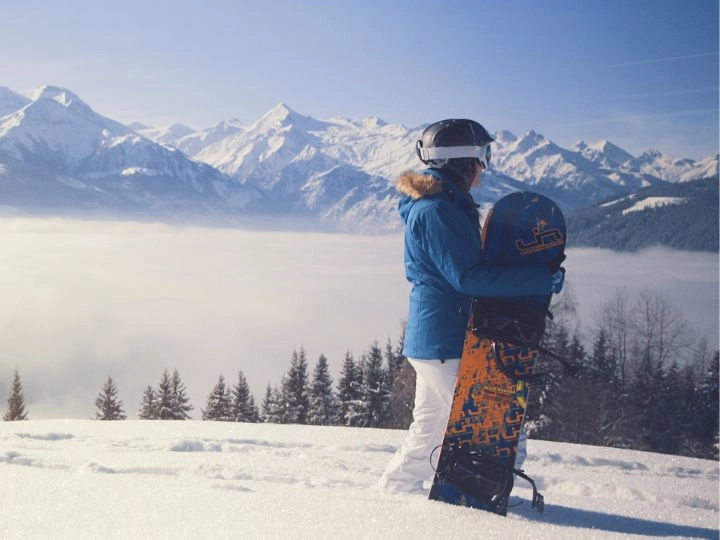
Switzerland
However, there are more major Swiss resorts posting 4m+ bases than any other Alpine nation. Saas-Fee with a nearly 6 metre annual average leads the pack with a roll call of famous names stack up behind it: Engelberg (2m), Zermatt (3m), Jungfrau (Grindelwlad, Wengen, Mürren) (3.3m), Verbier (5.5 m), Adelboden (4m), Davos-Klosters (5m) and Andermatt (4.5m).
Stay At:
This Swiss gem if full of alpine charm, with its very own luxury spa.

France
In France, high altitude resorts like Val Thorens (6m), Europe’s highest ski village, and Tignes (6.1m) are top snowfall performers. Both have seasons running from November to May. However, pedestrian-village Avoriaz posts the highest annual snowfall total, 8m. Les Arcs (5m) and Flaine (4.8m), its formidable snowfall record bolstered by its proximity to Mont Blanc, make up the top five here. In fact, some reports claim that Flaine reputedly gets as much as 15m of snowfall some years on its higher slopes (the 4.8m is at resort level), so it could be another contender for snowiest in Europe.
Stay At:
This impressive 5-start resort offers an incredible ski-in, ski-out experience with breath-taking views.
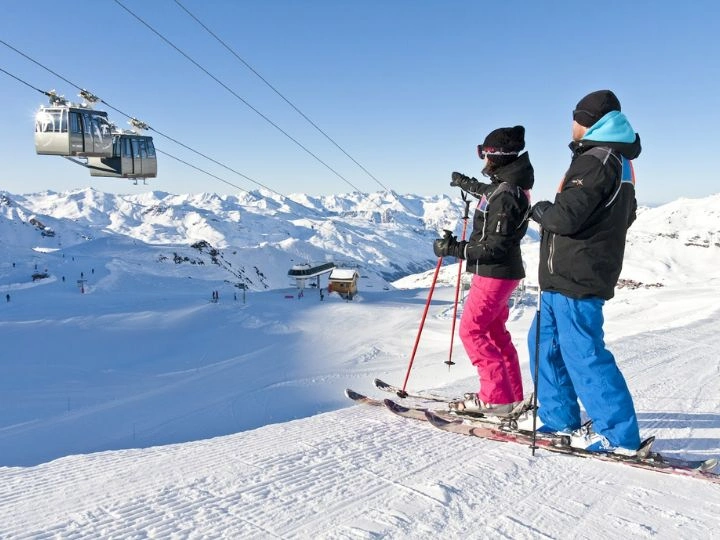
Italy
For Italy, high-altitude Cervinia, linked as it is to Zermatt with Europe’s highest slopes, that is the standout reporting a 10m annual average snowfall total. The Monterosa Ski region, home to Champoluc and Gressoney, is also up there with a 3m average.
Stay At:
Fantastic resort that is luxuriously decorated, perfect as a place to unwind after an exciting day skiing.
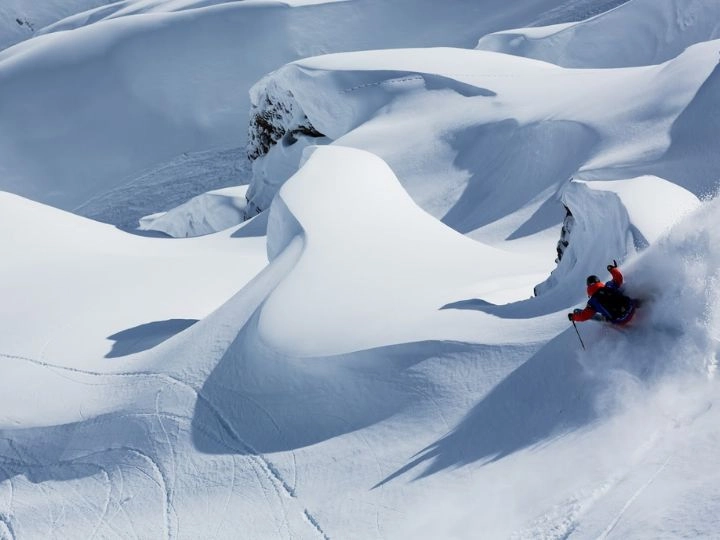
Scandinavia
Norway
Norway’s ski areas are highly regarded more for their reliable season-long snow cover thanks to their northerly latitude rather than for posting big snowfall totals. There is an exception though, coastal Myrkdalen near Voss has built a reputation as the region’s powder capital, scoring an average 5m of snowfall each winter.
Stay At:
This modern, yet alpine accommodation is direct to the slopes and also offers wonderful amenities and facilities.
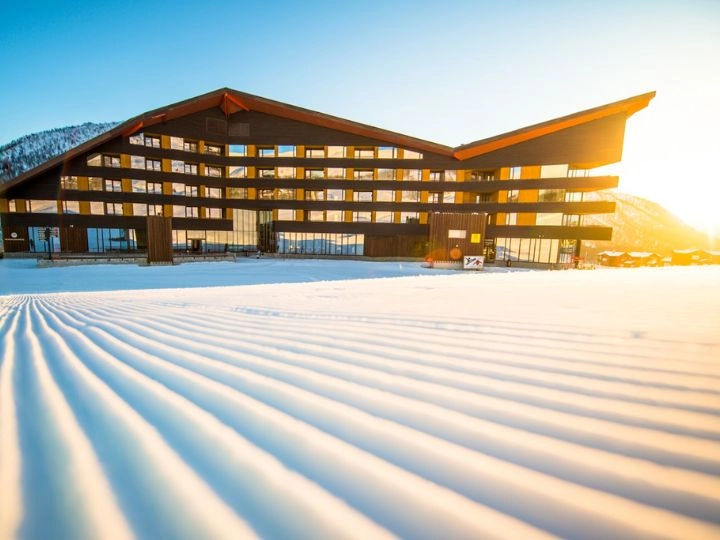
To find out more about the world’s snowiest ski resorts, you’ll need to speak to our ski experts. Call our ski experts on 0207 471 7700.






































































